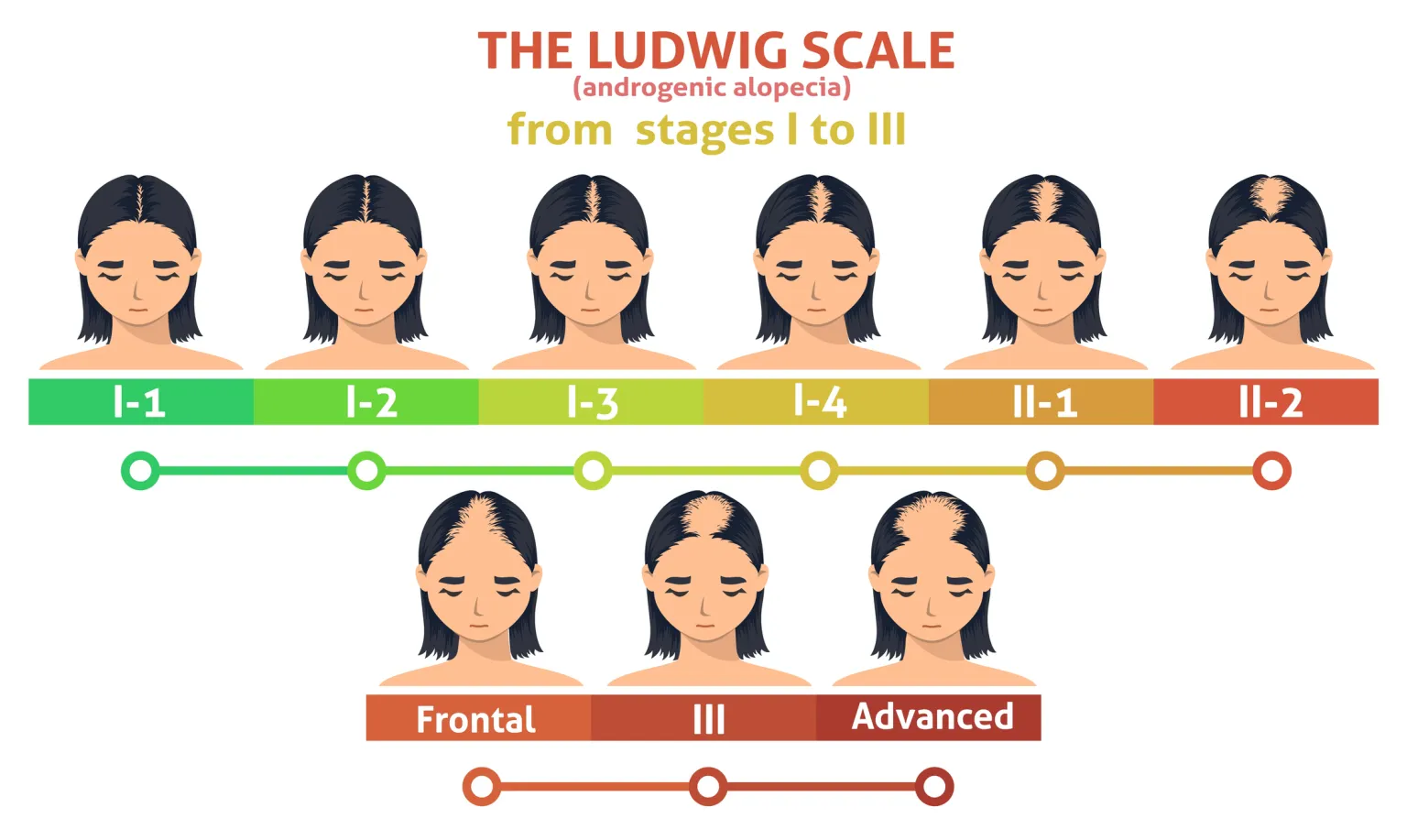Female Pattern Hair Loss
Female pattern hair loss (FPHL) is also a form of androgenetic alopecia and is a common cause of significant psychological stress in many women in varying age groups. It results in progressive miniaturisation of hair follicles & alteration of the hair cycle. Clinically it presents as diffuse thinning of the central scalp hair, with frontal sparing & creating a more visible scalp.

FPHL is often secondary to polygenetic, androgenic (hormonal), age & environmental factors. It may commence as early as puberty & its prevalence increases with age, with post menopausal woman being the most commonly affected.
One of the mechanisms of actions postulated is an increased peripheral sensitisation to androgens, particularly dihydrotestosterone (DHT). Conversely oestrogen has been shown to have a protective role in hair growth. Several studies have also demonstrated the role of chronic inflammation in promoting hair loss.
There are 3 primary patterns of FPHL described in the literature:
1. Christmas tree pattern – frontal hair thinning prominence (most common)
2. Ludwig pattern – central scalp thinning and frontal hairline sparing
3. Hamilton pattern – Bitemporal recession & occasionally vertex thinning
Note: Severe cases may involve the parietal & occipital regions with diffuse thinning.


There are a wide variety of treatment options with varying effectiveness. This is why it is important to discuss with a specialised doctor familiar with all the available options & together formulate a tailored management plan. Options include medications, PRP/PRF, growth factors, microneedling & laser. This requires a comprehensive evaluation of the patients history, expectations, compliance, efficacy & price capacity. Often for the best long term results, treatment options are combined, to restore & prevent or slow down future loss.
There are multiple scales for the classification of female pattern hair loss, the most widely used being the Ludwig & Savin scales. Ludwig scale has 3 grades from noticeable thinning to baldness of the scalp, whereas Savin pictorially demonstrated through 9 computer generated images the 8 stages of of progressive crown balding.


